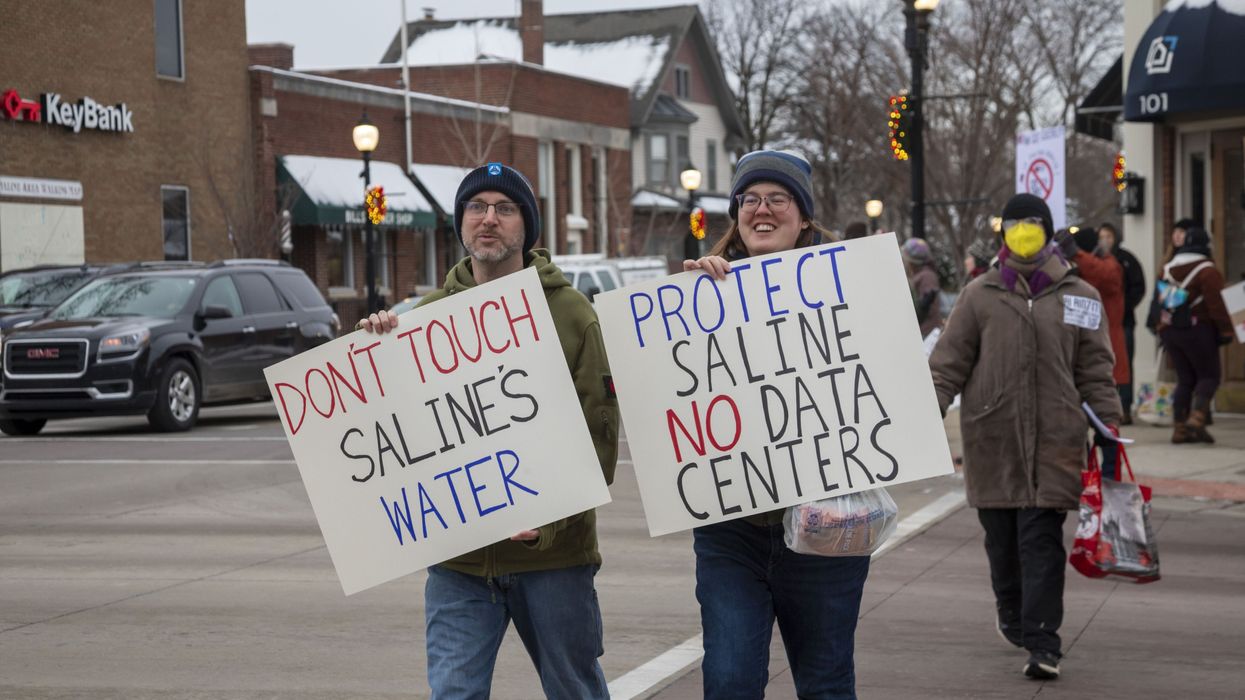April, 05 2021, 12:00am EDT

Tracking Evictions and Foreclosures Through Pandemic Finds Large Increases in Housing Insecurity Among Black and Hispanic Renters
WASHINGTON
The Center for Economic and Policy Research (CEPR) released today a new report documenting housing and food insecurity during the pandemic with the latest data through December 2020.
Housing Insecurity by Race and Place During the Pandemic, by Julie Yixia Cai, Shawn Fremstad, and Simran Kalkat, expands on an earlier analysis of housing insecurity during the early months of the pandemic, from late April through July 2020. This report includes additional details on housing and food insecurity in states and in 15 major metropolitan areas.
The period covered in this new analysis includes the implementation of the CARES Act and the first broadly applicable national moratorium on evictions for nonpayment of rent. Yet, housing insecurity remained very high during this period. While the relief efforts were essential, it is important to remember that housing insecurity was a major problem before the pandemic.
"Today, most low-income renters and homeowners spend more than half of their income on housing," noted co-author and economist Cai. "Large-scale, permanent solutions are needed to address these longstanding problems."
Among the report's key findings:
- Hispanic and Black renters have seen particularly large increases in housing insecurity, with roughly 44 percent of renters in both groups reporting housing insecurity during the pandemic.
- One-in-five households in the United States were housing insecure (no or only slight confidence in being able to make their next rent or mortgage payment), on average, each week from late April 2020 through December 2020.
- Renters were much more likely than homeowners to experience housing insecurity (about one-in-three renters experienced housing insecurity compared to about one-in-six homeowners).
- Roughly 42 to 43 percent of Hispanic and Black children were housing insecure each week between April and December 2020, and the racial and ethnic gaps in housing insecurity were wider than at any point from 2017 to 2019.
- There is a large geographical variation in housing hardship. The perceived risk of rental eviction was generally higher in the South, when compared to the national average. Southern states generally had very high levels of food insecurity.
- Among the 15 largest metropolitan areas, Miami and Houston had the highest levels of both housing and food insecurity.
CEPR will continue to document trends in housing insecurity after the most recent relief measures are fully implemented.
The Center for Economic and Policy Research (CEPR) was established in 1999 to promote democratic debate on the most important economic and social issues that affect people's lives. In order for citizens to effectively exercise their voices in a democracy, they should be informed about the problems and choices that they face. CEPR is committed to presenting issues in an accurate and understandable manner, so that the public is better prepared to choose among the various policy options.
(202) 293-5380LATEST NEWS
‘Don't Give the Pentagon $1 Trillion,’ Critics Say as House Passes Record US Military Spending Bill
"From ending the nursing shortage to insuring uninsured children, preventing evictions, and replacing lead pipes, every dollar the Pentagon wastes is a dollar that isn't helping Americans get by," said one group.
Dec 10, 2025
US House lawmakers on Wednesday approved a $900.6 billion military spending bill, prompting critics to highlight ways in which taxpayer funds could be better spent on programs of social uplift instead of perpetual wars.
The lower chamber voted 312-112 in favor of the National Defense Authorization Act (NDAA) for fiscal year 2026, which will fund what President Donald Trump and congressional Republicans call a "peace through strength" national security policy. The proposal now heads for a vote in the Senate, where it is also expected to pass.
Combined with $156 billion in supplemental funding included in the One Big Beautiful Bill signed in July by Trump, the NDAA would push military spending this fiscal year to over $1 trillion—a new record in absolute terms and a relative level unseen since World War II.
The House is about to vote on authorizing $901 billion in military spending, on top of the $156 billion included in the Big Beautiful Bill.70% of global military spending already comes from the US and its major allies.www.stephensemler.com/p/congress-s...
[image or embed]
— Stephen Semler (@stephensemler.bsky.social) December 10, 2025 at 1:16 PM
The Congressional Progressive Caucus (CPC) led opposition to the bill on Capitol Hill, focusing on what lawmakers called misplaced national priorities, as well as Trump's abuse of emergency powers to deploy National Guard troops in Democratic-controlled cities under pretext of fighting crime and unauthorized immigration.
Others sounded the alarm over the Trump administration's apparent march toward a war on Venezuela—which has never attacked the US or any other country in its nearly 200-year history but is rich in oil and is ruled by socialists offering an alternative to American-style capitalism.
"I will always support giving service members what they need to stay safe but that does not mean rubber-stamping bloated budgets or enabling unchecked executive war powers," CPC Deputy Chair Ilhan Omar (D-Minn.) said on social media, explaining her vote against legislation that "pours billions into weapons systems the Pentagon itself has said it does not need."
"It increases funding for defense contractors who profit from global instability and it advances a vision of national security rooted in militarization instead of diplomacy, human rights, or community well-being," Omar continued.
"At a time when families in Minnesota’s 5th District are struggling with rising costs, when our schools and social services remain underfunded, and when the Pentagon continues to evade a clean audit year after year, Congress should be investing in people," she added.
The Congressional Equality Caucus decried the NDAA's inclusion of a provision banning transgender women from full participation in sports programs at US military academies:
The NDAA should invest in our military, not target minority communities for exclusion.While we're grateful that most anti-LGBTQI+ provisions were removed, the GOP kept one anti-trans provision in the final bill—and that's one too many.We're committed to repealing it.
[image or embed]
— Congressional Equality Caucus (@equality.house.gov) December 10, 2025 at 3:03 PM
Advocacy groups also denounced the legislation, with the Institute for Policy Studies' National Priorities Project (NPP) noting that "from ending the nursing shortage to insuring uninsured children, preventing evictions, and replacing lead pipes, every dollar the Pentagon wastes is a dollar that isn't helping Americans get by."
"The last thing Congress should do is deliver $1 trillion into the hands of [Defense] Secretary Pete Hegseth," NPP program director Lindsay Koshgarian said in a statement Wednesday. "Under Secretary Hegseth's leadership, the Pentagon has killed unidentified boaters in the Caribbean, sent the National Guard to occupy peaceful US cities, and driven a destructive and divisive anti-diversity agenda in the military."
Keep ReadingShow Less
Fed Cut Interest Rates But Can't Undo 'Damage Created by Trump's Chaos Economy,' Expert Says
"Working families are heading into the holidays feeling stretched, stressed, and far from jolly."
Dec 10, 2025
A leading economist and key congressional Democrat on Wednesday pointed to the Federal Reserve's benchmark interest rate cut as just the latest evidence of the havoc that President Donald Trump is wreaking on the economy.
The US central bank has a dual mandate to promote price stability and maximum employment. The Federal Open Market Committee may raise the benchmark rate to reduce inflation, or cut it to spur economic growth, including hiring. However, the FOMC is currently contending with a cooling job market and soaring costs.
After the FOMC's two-day monthly meeting, the divided committee announced a quarter-point reduction to 3.5-3.75%. It's the third time the panel has cut the federal funds rate in recent months after a pause during the early part of Trump's second term.
"Today's decision shows that the Trump economy is in a sorry state and that the Federal Reserve is concerned about a weakening job market," House Budget Committee Ranking Member Brendan Boyle (D-Pa.) said in a statement. "On top of a flailing job market, the president's tariffs—his national sales tax—continue to fuel inflation."
"To make matters worse, extreme Republican policies, including Trump's Big Ugly Law, are driving healthcare costs sharply higher," he continued, pointing to the budget package that the president signed in July. "I will keep fighting to lower costs and for an economy that works for every American."
Alex Jacquez, a former Obama administration official who is now chief of policy and advocacy at the Groundwork Collaborative, similarly said that "Trump's reckless handling of the economy has backed the Fed into a corner—stuck between rising costs and a weakening job market, it has no choice but to try and offer what little relief they can to consumers via rate cuts."
"But the Fed cannot undo the damage created by Trump's chaos economy," Jacquez added, "and working families are heading into the holidays feeling stretched, stressed, and far from jolly."
Thanks to the historically long federal government shutdown, the FOMC didn't have typical data—the consumer price index or jobs report—to inform Wednesday's decision. Instead, its new statement and projections "relied on 'available indicators,' which Fed officials have said include their own internal surveys, community contacts, and private data," Reuters reported.
"The most recent official data on unemployment and inflation is for September, and showed the unemployment rate rising to 4.4% from 4.3%, while the Fed's preferred measure of inflation also increased slightly to 2.8% from 2.7%," the news agency noted. "The Fed has a 2% inflation target, but the pace of price increases has risen steadily from 2.3% in April, a fact at least partly attributable to the pass-through of rising import taxes to consumers and a driving force behind the central bank's policy divide."
The lack of government data has also shifted journalists' attention to other sources, including the revelation from global payroll processing firm ADP that the US lost 32,000 jobs in November, as well as Gallup's finding last week that Americans' confidence in the economy has fallen by seven points over the past month and is now at its lowest level in over a year.
The Associated Press highlighted that the rate cut is "good news" for US job-seekers:
"Overall, we've seen a slowing demand for workers with employers not hiring the way they did a couple of years ago," said Cory Stahle, senior economist at the Indeed Hiring Lab. "By lowering the interest rate, you make it a little more financially reasonable for employers to hire additional people. Especially in some areas—like startups, where companies lean pretty heavily on borrowed money—that's the hope here."
Stahle acknowledged that it could take time for the rate cuts to filter down to employers and then to workers, but he said the signal of the reduction is also important.
"Beyond the size of the cut, it tells employers and job-seekers something about the Federal Reserve's priorities and focus. That they're concerned about the labor market and willing to step in and support the labor market. It's an assurance of the reserve's priorities."
The Federal Reserve is now projecting only one rate cut next year. During a Wednesday press conference, Fed Chair Jerome Powell pointed to the three cuts since September and said that "we are well positioned to wait to see how the economy evolves."
However, Powell is on his way out, with his term ending in May, and Trump signaled in a Tuesday interview with Politico that agreeing with immediate interest rate cuts is a litmus test for his next nominee to fill the role.
Trump—who embarked on a nationwide "affordability tour" this week after claiming last week that "the word 'affordability' is a Democrat scam"—also graded the US economy on his watch, giving it an A+++++.
US Sen. Bernie Sanders (I-Vt.) responded: "Really? 60% of Americans live paycheck to paycheck. 800,000 are homeless. Food prices are at record highs. Wages lag behind inflation. God help us when we have a B+++++ economy."
Keep ReadingShow Less
Sanders Champions Those Fighting Back Against Water-Sucking, Energy-Draining, Cost-Boosting Data Centers
Dec 10, 2025
Americans who are resisting the expansion of artificial intelligence data centers in their communities are up against local law enforcement and the Trump administration, which is seeking to compel cities and towns to host the massive facilities without residents' input.
On Wednesday, US Sen. Bernie Sanders (I-Vt.) urged AI data center opponents to keep up the pressure on local, state, and federal leaders, warning that the rapid expansion of the multi-billion-dollar behemoths in places like northern Virginia, Wisconsin, and Michigan is set to benefit "oligarchs," while working people pay "with higher water and electric bills."
"Americans must fight back against billionaires who put profits over people," said the senator.
In a video posted on the social media platform X, Sanders pointed to two major AI projects—a $165 billion data center being built in Abilene, Texas by OpenAI and Oracle and one being constructed in Louisiana by Meta.
The centers are projected to use as much electricity as 750,000 homes and 1.2 million homes, respectively, and Meta's project will be "the size of Manhattan."
Hundreds gathered in Abilene in October for a "No Kings" protest where one local Democratic political candidate spoke out against "billion-dollar corporations like Oracle" and others "moving into our rural communities."
"They’re exploiting them for all of their resources, and they are creating a surveillance state,” said Riley Rodriguez, a candidate for Texas state Senate District 28.
In Holly Ridge, Lousiana, the construction of the world's largest data center has brought thousands of dump trucks and 18-wheelers driving through town on a daily basis, causing crashes to rise 600% and forcing a local school to shut down its playground due to safety concerns.
And people in communities across the US know the construction of massive data centers are only the beginning of their troubles, as electricity bills have surged this year in areas like northern Virginia, Illinois, and Ohio, which have a high concentration of the facilities.
The centers are also projected to use the same amount of water as 18.5 million homes normally, according to a letter signed by more than 200 environmental justice groups this week.
And in a survey of Pennsylvanians last week, Emerson College found 55% of respondents believed the expansion of AI will decrease the number of jobs available in their current industry. Sanders released an analysis in October showing that corporations including Amazon, Walmart, and UnitedHealth Group are already openly planning to slash jobs by shifting operations to AI.
In his video on Wednesday, Sanders applauded residents who have spoken out against the encroachment of Big Tech firms in their towns and cities.
"In community after community, Americans are fighting back against the data centers being built by some of the largest and most powerful corporations in the world," said Sanders. "They are opposing the destruction of their local environment, soaring electric bills, and the diversion of scarce water supplies."
Keep ReadingShow Less
Most Popular


